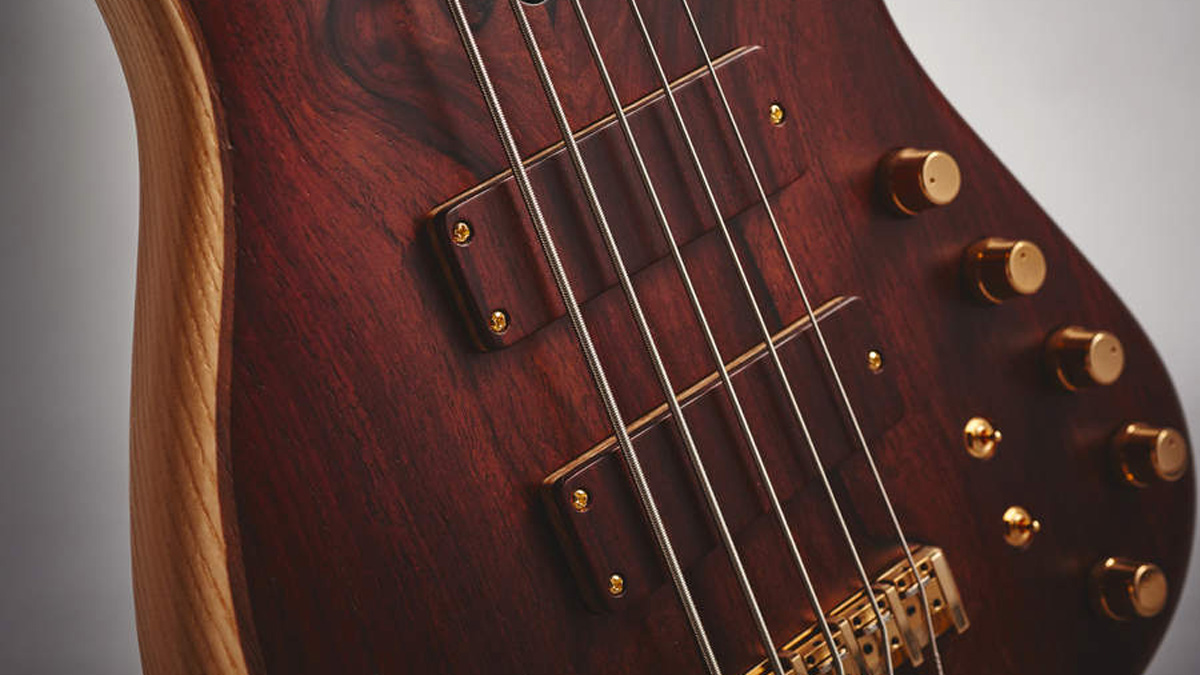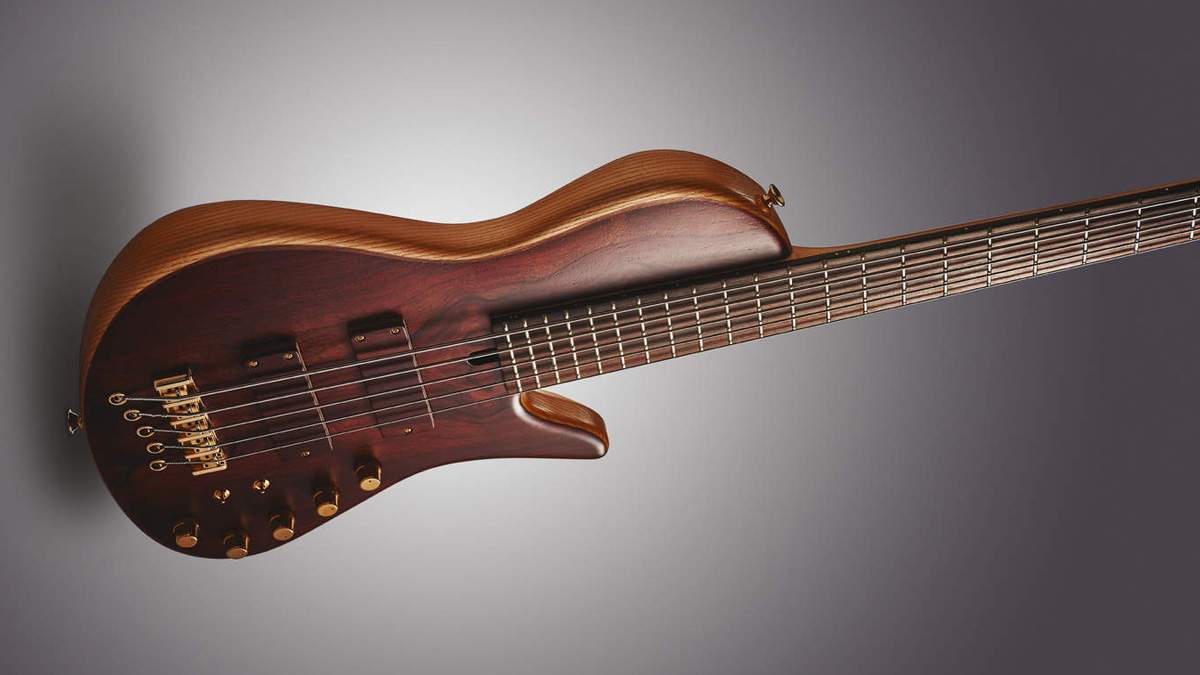MusicRadar Verdict
Impressive, if a tad fussy.
Pros
- +
Sizeable array of tones.
Cons
- -
A little complicated, with a core sound that is hard to move away from.
MusicRadar's got your back
Maruszczyk basses have certainly got players talking lately, not least over here at MusicRadar.
We were very impressed with the Jake L4A we covered recently, but this bass is quite different in terms of design, pickups and general layout. Singlecut body shapes are always divisive, we find, and as the bass is a five-string there is some extra timber to consider when sizing up its weight and balance. So what exactly do we get for £2499?
Build
There’s no denying that the Sputnik looks very impressive. Its warm-coloured imbuia timber top and ash core work very well, and the matching headstock rounds off the visuals nicely. The choice of timbers also helps to make the singlecut design look far more effective, to this reviewer at least. The timber figuring, along with the gold hardware and matching pickup covers, really catches the eye.
Both the body and neck have had a matte finish applied, which gives the bass a nicely organic feel. The rounded curves of the body add comfort, while the rear contouring allows the bass to sit against the player’s body. The heel joint where the neck meets the body is very well sculpted, improving the level of playability.
The sizeable headstock is embellished with an inlaid abalone logo and gold Schaller machine heads fitted with cocobolo tuning pegs. The pau ferro fingerboard has no position markers, but there are white side dots along the side of the five-piece laminate maple neck. The neck profile fits the player’s hand very well, and with 18mm string spacing at the bridge, the neck is easily navigated without any feeling of the strings being cramped together. ‘Elegant’ is the word that springs to mind.
All of the hardware feels sturdy and solid; the machine heads turn smoothly, as do the five controls, which are volume, pickup pan and three-band EQ. Each pickup has its own series/single-coil/ parallel switch, while the volume control offers push/pull operation for active and passive modes. The treble control acts as a passive tone control in passive mode.
Sounds
Initial impressions are good, although the instrument is noticeably headstock heavy; this is rectified to some degree once it is placed on a strap. Acoustically the tone is woody, as one would expect, and as the bass is of through-neck construction its sustain is clearly apparent from the start. You can easily detect the resonance by simply holding the instrument against your body and plucking the strings.
Plugging in highlights a pronounced midrange, even with the EQ set flat, so some effort will be required to dampen that characteristic unless you want it to shine through. Panning across the Bass Culture soapbar pickups, there is an impressive array of tones on offer - but we wonder if the soapbars convey too much midrange bark, meaning that some tonal settings have limited use. The EQ offers a helping hand, of course, and we found the passive mode particularly pleasing, the woody nature of the core sound suiting the less colourful passive tones.

Switching back to active mode, the hard, woody tone that seems to be this instrument’s fundamental characteristic is difficult to move away from; this is made more pronounced by the low, buzzy action. It’s not that the bass is badly set up, it’s just that it’s not set up to our taste. However, that is easily rectified. String to string volume is particularly pleasing, with tones across all registers standing out. A light touch opens up different tones and colours compared to a heavier ‘dug-in’ approach, so bear that in mind before you start adding large amounts of boosted EQ. Calling the pickup switching into play also opens the palette further.
What’s immediately obvious is that this isn’t a simple bass, and that some experimentation is required to address the question of what the instrument is capable of. It has hidden depths, that’s for certain, so the question is - are you willing to put the time in to coax the full gamut of tones from it?
Visually impressive, the Sputnik is a very different proposition from the Jake L4A and is aimed at a different bass player. It’s fully featured, and for players who like options, there is much to admire, but at £2500, it faces severe competition. Nevertheless, this is a very impressive instrument.
“We were arguing a lot and we were miserable”: How Green Day exceeded expectations with their most ambitious song
"There’s plenty for us guitarists to learn – and ‘less is more’ is the overriding lesson": how to play like George Harrison on The Beatles' Abbey Road
“They didn’t like Prince’s bikini underwear”: Prince’s support sets for the The Rolling Stones in 1981 are remembered as disastrous, but guitarist Dez Dickerson says that the the crowd reaction wasn’t as bad as people think










